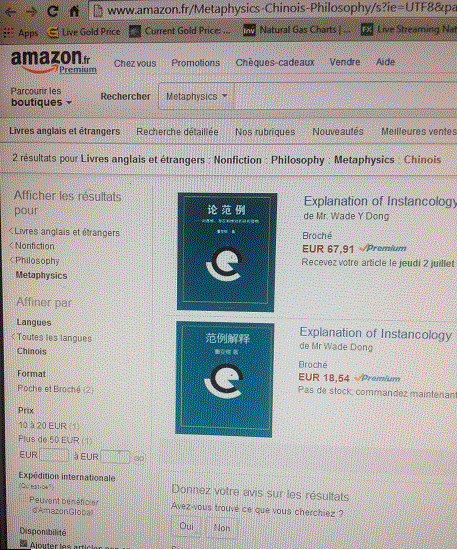Analytical ontology
Instancology: Analytical Ontology or a New Foundation Beyond Analysis?
Introduction
In the long arc of Western philosophy, ontology—the study of being and existence—has repeatedly oscillated between two poles: the analytic approach, favoring logic, language, and clear categorization; and the continental approach, seeking depth in phenomena, experience, and meaning. Instancology, a philosophical system developed by Wade Dong, arrives as both a challenge and an evolution: it proposes a “four-layered ontology” that recasts the very foundation of what it means to be, know, and relate, promising to “poke a hole” in the cloak of traditional metaphysics.
This article explores whether Instancology should be seen as a new form of analytical ontology or as something more fundamental—a paradigm that absorbs, supersedes, and transforms the analytic tradition itself.
---
The Analytic Tradition and Its Limits
Analytical ontology, as practiced from Frege and Russell through to Quine and beyond, is defined by its faith in logic, language, and structure. It seeks to clarify existence by analysis: breaking things into their parts, tracing relationships, and formalizing all entities as members of sets, classes, or language games.
Yet, over its history, analytic ontology has run up against recurrent puzzles:
Are the laws of logic and mathematics real or mere inventions?
Can symbols truly capture meaning, or is something always left unsaid?
Is there a “whole” beyond the sum of its parts?
These questions have fueled debates from Russell’s paradox to Wittgenstein’s language games, never reaching final resolution.
---
Instancology: A New Analytical Framework?
At first glance, Instancology appears to extend the analytic method: it defines the world as composed of “instances,” each with rigorous relations. Its four-layered ontology—Absolute Absolute (AA), Relatively Absolute (RA), Absolute Relative (AR), and Relatively Relative (RR)—offers a precise map of being, with each layer defined by its own features and principles.
Crucially, Instancology identifies:
AA: The unspeakable, all-encompassing background of reality, beyond representation.
RA: The realm of laws, logic, and mathematics—necessity without representation.
AR: The world of natural instances—what science studies as “nature.”
RR: The human world of representations, meanings, and symbols.
Instancology’s structure seems analytical in its clarity and its drive to separate the layers, demarcate boundaries, and formalize relations.
---
Beyond Analysis: Whole Precedes Parts
But the true innovation of Instancology lies in what it resists: the reduction of the whole to its parts. Where analytic ontology traditionally explains the whole as an aggregate, Instancology insists that the Whole precedes its constituent parts in every layer. For instance, “movement” is the whole feature for the structural world; “space-time” is the whole of the macro world; “uncertainty” is the whole of the micro world, not derived from component phenomena, but originary—shaping and generating all that follows.
This reversal—giving priority to the Whole—breaks with centuries of part-based analysis. It also introduces a third way of knowing: WuXing (悟性), the “flash of insight” or “enlightenment” beyond experience and reason, as the key to unlocking new paradigms. Laws and truths are not constructed stepwise; they are revealed as new wholes.
---
Instancology and the End of Analysis
Thus, Instancology might be called an “analytical ontology” in the sense that it provides a systematic framework with clear logical layers. But it is also, fundamentally, a critique of analysis itself:
It exposes the limits of language and logic to grasp the Absolute.
It separates meaning, logic, and symbol—where analytic philosophy often conflates them.
It reveals the necessity of insight (WuXing) for paradigm shifts.
By distinguishing the four irreducible layers, Instancology claims to have completed the task that analytic ontology began but could never finish—providing not just analysis of being, but a map of how wholes give rise to parts, and how final truth (AA) stands above and beyond all analysis.
---
Conclusion
Is Instancology an analytical ontology? In its rigor and structure, yes—but only in passing. In its heart, Instancology is a new foundation: an ontology that incorporates analysis yet transcends it, embracing both the clarity of logic and the depth of insight. It represents the culmination and the overcoming of analytic metaphysics—proposing a worldview in which the Whole, not the part, is first, and the Absolute, not the relative, is final.
